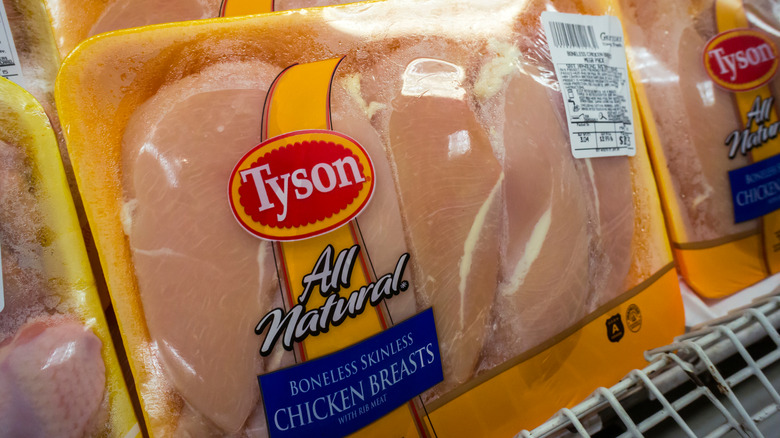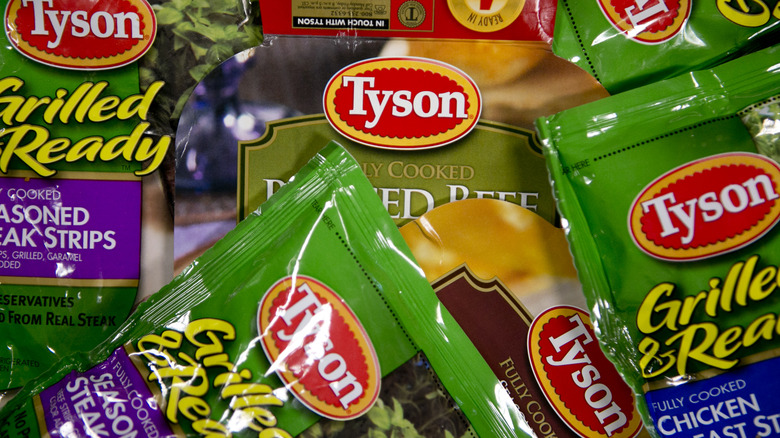How Tyson Foods Is Planning Its Comeback
The United States is the world's largest producer of chicken meat, exceeding 20 million tons per year and six tons more than runner-up China (per The Science Agriculture). America's leading poultry producer, Tyson Foods, accounts for about one-fifth of the domestic supply of chicken meat (via The Wall Street Journal). But a series of challenges, from staffing shortages to chicks failing to hatch, have threatened to dethrone Tyson as the nation's top poultry producer. The company has also recently faced public relations crises surrounding COVID-19 safety measures for workers and price gouging allegations (per Iowa Starting Line).
Tyson Foods has weathered tough times in the past. In fact, the company was founded in 1931 during the Great Depression, went public in 1963, and by the end of 1989, became "the world's largest fully-integrated producer, processor, and marketer of poultry-based food products" (per the company's website). In the years since, Tyson has expanded beyond America's borders and beyond chicken. So how is the company getting through its latest challenges?
Tyson is making some adjustments
After numerous challenges during the pandemic, Tyson Foods is working to bounce back as the nation's largest poultry producer. Company CEO Donnie King told The Wall Street Journal on Monday that Tyson has "not been where we want to be from a performance perspective; from an execution perspective." The company has faced increased chicken feed costs totaling more than $285 million over the last six months (via WSJ).
To combat these challenges, Tyson released in its Q2 earnings report that it plans to increase productivity and efficiency, as well as expand its online shopping presence. The company forecasts a 1% increase in USDA production compared to 2021, and hopes to see stronger sales later in 2022, since inflation has not hit chicken prices as hard as beef and pork prices (per the USDA). Tyson also plans to partner with SideChef to add shoppable QR codes to Walmart's and Target's websites — a new feature that many companies are exploring to make it easier for shoppers to buy ingredients for recipes, according to Grocery Dive. The company is also planning $1 billion in "productivity savings" by the end of fiscal year 2024, according to the report. It's a series of changes that the company hopes can revive shareholders' confidence and recoup lost ground.

